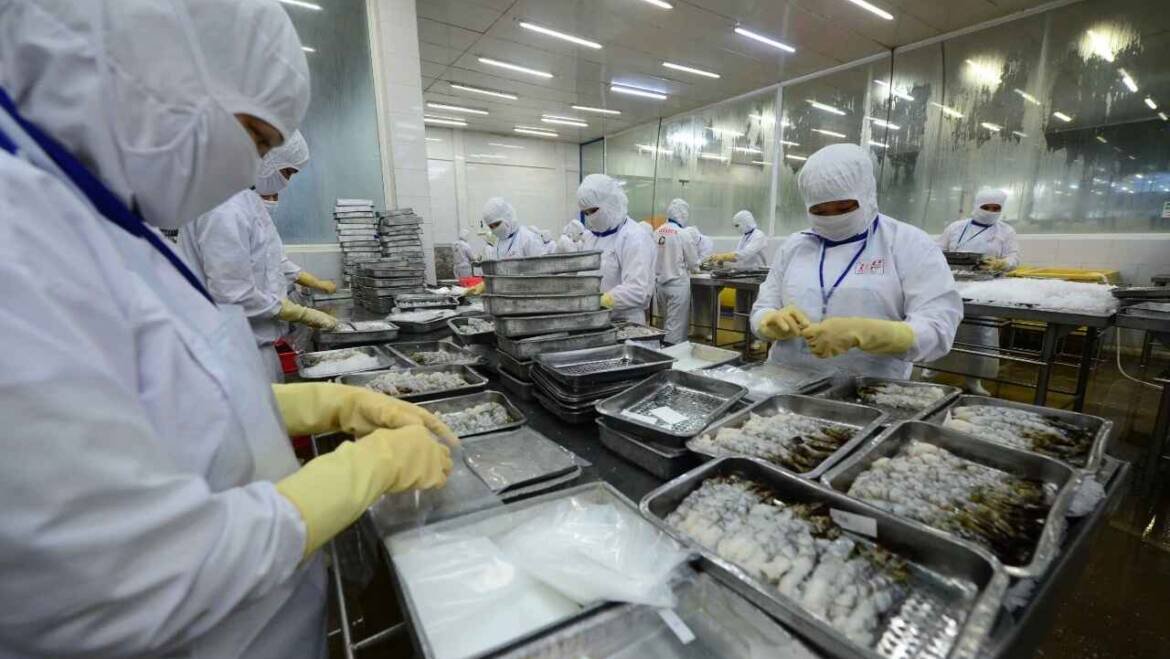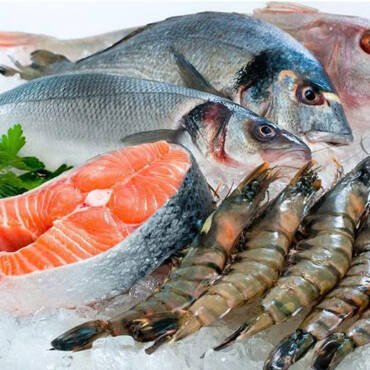Despite difficulties in the US, shrimp and fish exports still reached 3.3 billion USD, up 21% after the first 4 months of the year due to strong growth in many major markets such as China, EU, Japan… However, businesses still hope that after negotiations, tariffs in the US will be lifted.
Make good use of FTAs
The US’s reciprocal tax is disrupting Vietnam’s shrimp and fish export activities . According to the Vietnam Association of Seafood Exporters and Producers (VASEP), after the first 4 months of the year, exports to the US market reached 498 million USD, down 15% compared to the same period in 2024. However, the market has many other bright spots such as China, Japan, the EU, South Korea and ASEAN. Thanks to that, after the end of the first 4 months of 2025, the export turnover reached 3.3 billion USD, up 21% over the same period in 2024. In April 2025 alone, the challenging opening month when the US announced the imposition of reciprocal tax, seafood export turnover reached 850 million USD, up 10% over the same period last year.
In the past 4 months, shrimp and fish exports increased sharply thanks to the Chinese market with a turnover of up to 710 million USD, up 56% over the same period last year. April alone reached 182 million USD, up 29%. High-end customers in the billion-people market favor shrimp, crab, and mollusk products. Right after China is the high-end Japanese market, reaching 537 million USD, up 22%; the growth rate is stable thanks to products with high added value. Next is the EU market reaching 351.5 million USD, up 17% and Korea reaching 264 million USD, up 15%. The ASEAN market reached 219 million USD, up 25% and is considered a bright spot in the past 4 months. The growth results in these markets are thanks to preferential tariff policies from bilateral and multilateral free trade agreements (FTAs), especially CPTPP and EVFTA.
The main product, shrimp, still plays an important role with a turnover of nearly 1.3 billion USD, an increase of 30% over the same period in 2024. This growth comes from high demand in major markets such as China, the EU, and Japan, along with shrimp prices gradually recovering due to the rebalancing of global supply and demand. In addition, pangasius reached a turnover of 633 million USD, an increase of 9%. Notably, some products with impressive growth such as tilapia and red tilapia reached
19 million USD, up 138%; mollusks reached 216 million USD, up 18%; crabs 83.1 million USD, up 82% and crabs 112 million USD, up 50%. Tuna exports alone increased by only 1% at 304 million USD due to a shortage of raw materials, especially due to regulations on the minimum size of skipjack tuna.
For the EU market, which has good prospects for shrimp products in the first quarter, exports reached more than 107 million USD, up 33% over the same period last year and marking a positive start for 2025. The growth momentum comes from the recovering demand in this market. In addition, there is the initiative of Vietnamese enterprises in diversifying products, as well as effectively taking advantage of tariff incentives from the EVFTA agreement. Most of the major markets that are “consumption locomotives” in the EU recorded positive growth in the first quarter of 2025 such as: Germany reached 28 million USD, up 38%; Belgium reached 23 million USD, up 59%; the Netherlands reached 21 million USD, up 19%; France reached 8 million USD, up 39%.
The average export price of whiteleg shrimp to the EU remained stable at 7.6 USD/kg while that of black tiger shrimp increased slightly to 10.9 USD/kg. Shrimp prices reflect improved demand and the high-end segment has much room for growth. The proportion of processed shrimp (boiled, steamed, supermarket packaged) currently accounts for about 42-45% of total exports. This is evidence of a strong shift in consumer trends towards products with high added value.
90 days of tax deferral is about to expire, why?
Ms. Le Hang, Deputy Secretary General of VASEP, forecasts: In 2024, the US will be the largest importer of Vietnamese seafood. The reciprocal tax policy will severely affect products such as pangasius and shrimp, which are heavily dependent on this market. Currently, the US is implementing a 90-day extension policy with reciprocal taxes . Up to now, almost 30 days have passed. In the next 2 months (May – June 2025), Vietnam’s seafood exports are expected to have a strong shift before the reciprocal tax policy takes effect from July 9, 2025. Currently, businesses will focus on boosting exports to the US, in order to make the most of the period before new tariffs increase costs. It is expected that export turnover to this market can increase by 10 – 15% compared to April 2025, thanks to additional new contracts to maintain market share.
Ms. Hang, on the other hand, said that exports to other markets such as China and ASEAN are likely to stagnate, with growth of only about 3-5%. The reason is the increasingly fierce competition from Chinese seafood products , which are subject to high tariffs in the US and are forced to shift to the domestic market as well as neighboring markets such as ASEAN. This competition will reduce the attractiveness of Vietnamese products, especially in the low-cost segment. “The EU and Japan alone can maintain stable growth of about 8-10%, thanks to the advantages of free trade agreements. However, the growth of these two markets is not enough to offset the slowdown in China and ASEAN,” Ms. Hang worried.
Mr. Ho Quoc Luc, Chairman of Sao Ta Board of Directors (Fimex VN), has a different perspective on the time when he said that the 90-day extension of the US’s reciprocal tax is actually only about 2 weeks at this point. The reason is that the US applies the time to calculate tax when the ship arrives at the port of arrival, not from the port of departure. Meanwhile, from Vietnam to ports on the East Coast of the US takes up to 45 days (to the West Coast is 10-15 days faster), so in reality we only have about 2 weeks left to export goods. After this time, goods will be subject to a very large tax. Therefore, businesses do not dare to take risks but only follow existing contracts, as well as actual capacity in the spirit of “how much is better”. On the other hand, currently domestic raw materials are in short supply due to the widespread epidemic, causing prices to increase sharply, greatly affecting the operations of many businesses.
“On May 7, Vietnam will enter the reciprocal tax negotiation round with the US, we only expect a result that is beneficial to the economy in general. Aquaculture is a sector that provides essential products for the lives of American consumers and accounts for a low proportion of turnover in the total export structure of Vietnam to the US; therefore, we hope we will achieve good negotiation results,” Mr. Luc shared.
Sharing the same view, Mr. Nguyen Van Kich, Chairman of the Board of Directors and General Director of Cafatex Seafood Joint Stock Company, said: With only 10% import tax to the US, it has caused huge additional costs, especially for signed contracts. The company is continuing to make efforts to overcome this difficult period by seeking to expand into new markets. The most important thing is still the result of negotiations between the two governments of Vietnam and the US. If the negotiations are favorable, other markets will also improve and vice versa.




Add Comment